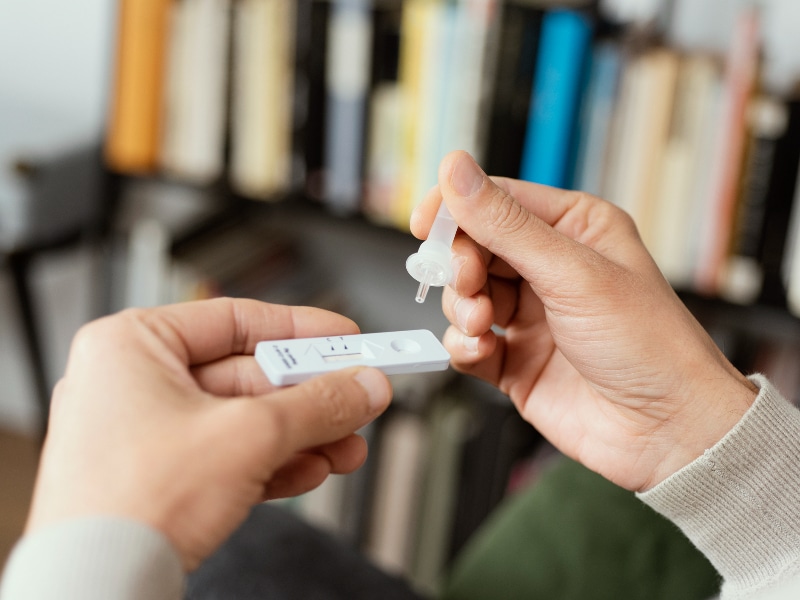By now we’re all familiar with how to stop the spread of COVID-19: Wear a mask, watch your distance, get tested as needed, and wash your hands. And above all, get vaccinated. Now, convenient at-home COVID-19 test kits are a part of the universal testing regimen.
Since the pandemic began, lab technicians across the country have worked tirelessly to process countless nasal swabs and saliva specimens for signs of the virus.
It’s an often thankless but crucial task overseen by experts like Karen Roush, MD, vice-chair of pathology for Methodist Health System. But now you can share the burden by taking a self-administered test in the comfort of your home.
First, consider a few facts about at-home testing and some words of wisdom from Dr. Roush:
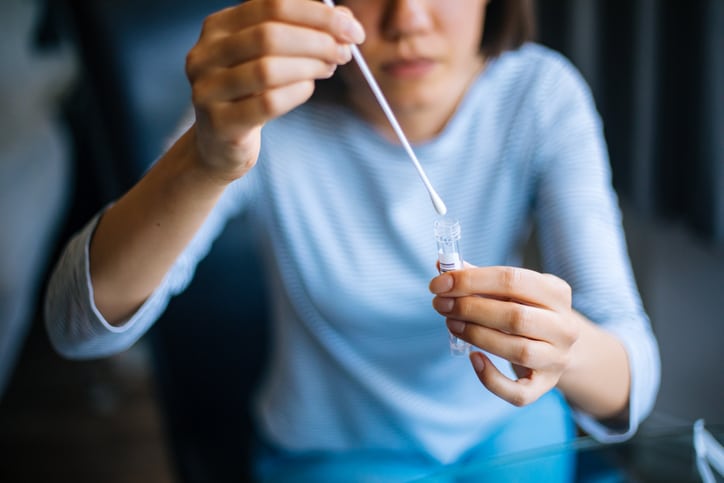
WHAT’S THE BENEFIT OF SELF-TESTING?
It’s tough to beat the speed and convenience of an antigen test, especially when professional testing may not be readily accessible or, for example, if you want to know whether you should send Junior back to school after close contact.
“It’s not quite as sensitive as a PCR test,” Dr. Roush says, referring to the molecular tests that must be sent to a lab, “but you can complete the whole thing at home.”
It takes just 15 minutes to perform a test, and you can make do with a painless mid-nasal swab. No need for the dreaded deep “brain swab.” Best of all, the results are easy to read. You won’t need lab cred like Dr. Roush to get a result.
“It looks similar to a pregnancy test, so there are lines that you can read,” she says.
Just don’t expect an at-home test to cut it for traveling commercially.
“Some airlines require a PCR test,” Dr. Roush says, “so they may not take a test that you’ve done at home on yourself.”
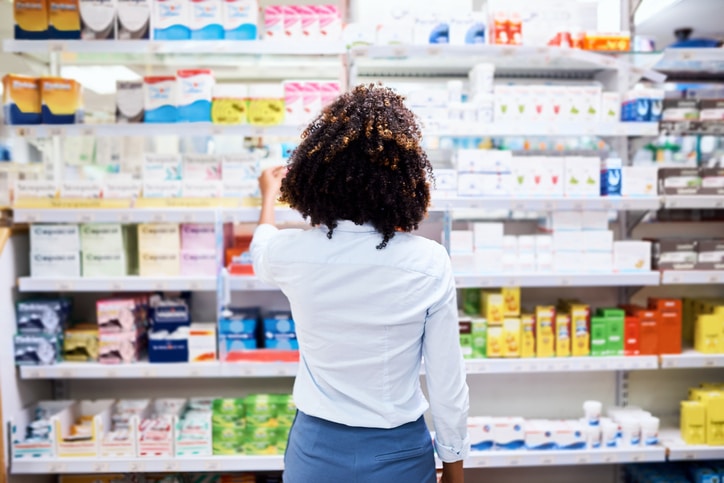
HOW MUCH DO THEY COST?
At-home testing kits usually cost between $25 and $35, but some can cost upwards of $100, especially if you’re mailing a sample to a lab.
That’s not cheap, considering COVID-19 tests are available free of charge at community-based sites nationwide, as well as many clinics and pharmacies. But some insurance plans cover the cost, and you’re really paying for convenience, instant gratification, and (potentially) peace of mind.
What’s more, many clinics and testing sites require that you have symptoms before they will administer a test. And then you may have to wait for the results.
HOW WILL I KNOW IF I NEED A TEST?
There’s a difference between wanting something and needing it. Chances are, if you (or your loved ones) don’t feel sick, you don’t need to test yourself for COVID-19.
“The ideal candidate is someone who knows they’ve been exposed and then develops symptoms,” Dr. Roush says.
The Texas State Department of Health Services offers a handy “COVID-19 Self-Checker” to determine whether you should be tested.
If you’re feeling sick but test negative, it could be you are suffering from allergies or the common cold. But it could also be a false negative.
“Just because the test is negative,” Dr. Roush warns, “you should not rule out the fact that you may have COVID.”
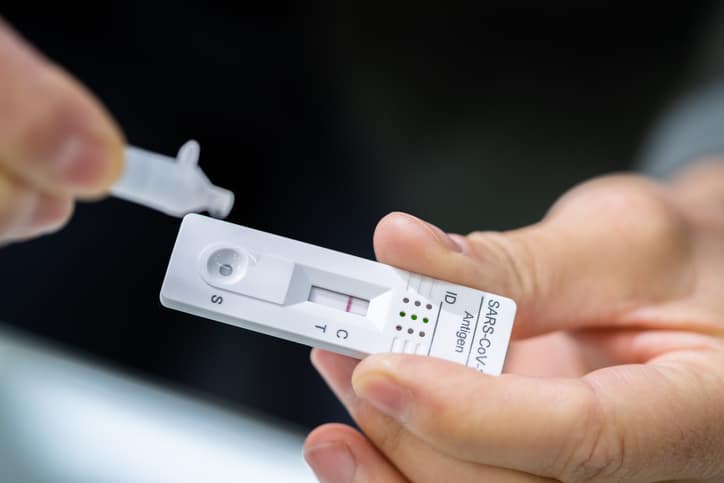
ARE SELF TESTS ACCURATE?
By their nature, rapid antigen tests are less sensitive than molecular diagnostic tests that must be processed by a lab.
That’s because these “gold standard” PCR tests amplify any traces of the virus so they are more easily detected. In effect, if you have COVID-19, a PCR test can come back positive before you feel sick, and even after you’re no longer contagious.
But that doesn’t mean antigen tests are unreliable, especially now that the ultra-contagious Delta variant has become the dominant strain. Viral loads tend to be hundreds of times larger with Delta, so if you’re infected, chances are good a rapid at-home test will detect it. Just don’t expect the test to tell you what variant you have.
Also, most at-home test kits contain two tests that can be taken hours apart to reduce the risk of a false positive or false negative.
Of course, any self-administered test depends on your ability to follow the instructions to the letter.
“With all of the tests, the requirements need to be followed,” Dr. Roush says. “They’re going to be very specific about how the samples need to be collected, whether it’s a cotton swab in the nose or spitting in a cup.”
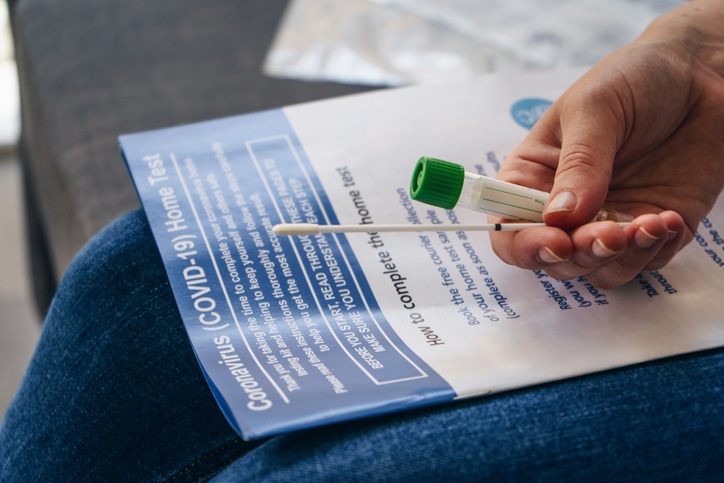
ARE AT-HOME TESTS NECESSARY?
Self-testing kits may be costlier and somewhat less accurate than the PCR tests that are often free at community testing sites, pharmacies, and clinics.
But the fact remains that at-home tests are convenient and quick — and speed may be of the essence for vulnerable patients with potentially severe infections.
“That may induce someone to go get care earlier than they would by waiting to get a PCR test result back,” Dr. Roush says. “And that, in turn, can prevent a decline into severe COVID-19.”

